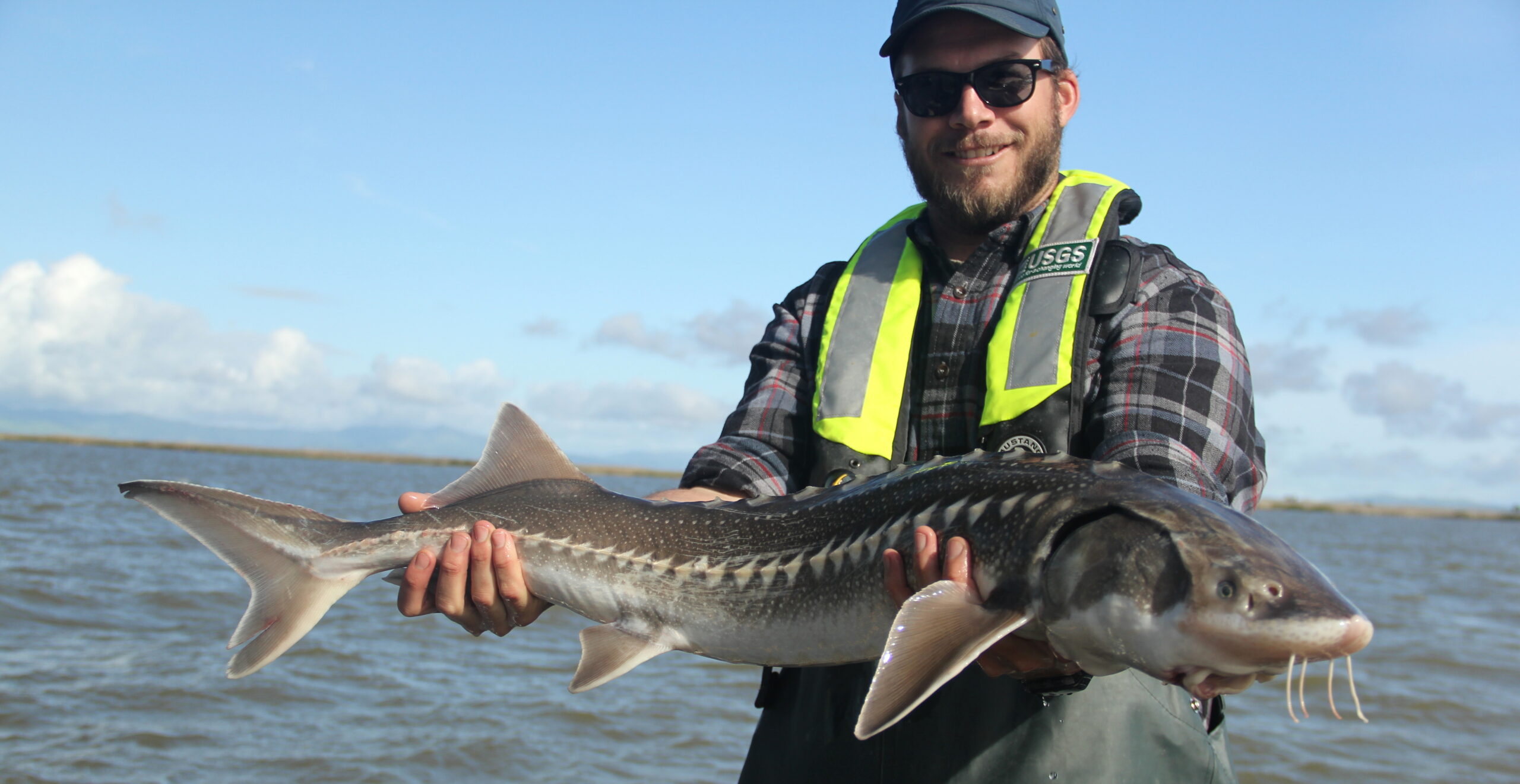By Nate Seltenrich

White sturgeon may not typically be considered “charismatic megafauna,” but Veronica Larwood thinks they deserve the recognition. A biological science technician with the U.S. Geological Survey in Sacramento, she served as lead author of a study in San Francisco Estuary and Watershed Science investigating the fish’s use of specific estuarine habitats. “They’re beautiful, they’re prehistoric looking,” she says. “They’re this living dinosaur.”
They’re also at risk. After recovering from near extirpation in the late 19th century due to commercial harvest, the local white sturgeon population is again in decline, threatened by multiple factors including habitat loss, recent droughts, and an unsustainable recreational fishery. The largest of nine North American sturgeon species, white sturgeon is distributed along the eastern Pacific Ocean from central California to Alaska, inhabiting rivers, estuaries, and nearshore coastal environments. In the San Francisco Estuary, which contains the state’s largest white sturgeon population and the species’ southernmost reproducing population, it is listed as a species of special management concern. All of this lays the groundwork for Larwood’s study, designed to aid in conservation of the species locally and across its range by learning more about how it uses wetland habitats.

As a group, white sturgeon are characterized as amphidromous, meaning they regularly migrate between freshwater and the sea, but not for the purpose of breeding. Adults in the local population use coastal habitats to some degree, but typically remain in the Estuary and lower Sacramento and San Joaquin rivers, Larwood and coauthors write. There they congregate in deep areas with fine-sediment substrate, and are thought to move into shallow subtidal habitats to feed during high tides.
To learn more, the researchers deployed setlines with baited hooks across a variety of habitat types at Suisun Bay’s Ryer Island, one of the Estuary’s few remaining natural wetlands, on six occasions between May 2017 and October 2018. In total they caught 111 adult and sub-adult white sturgeon: 54 in the deep channel, 56 in the shallow shoal, and 1 in the shallow wetland, which they suspect may have been baited in. “Throughout the entire year, throughout these different environmental conditions, we saw sturgeon in the deep channel and in the shoal feeding,” Larwood says. “This could be used to inform management in restoring estuarine habitat. I think this was a really good stepping stone to go off.” Future research at another site, she adds, could investigate estuarine habitat use for rearing.
Produced by Estuary News Team, June 2021



